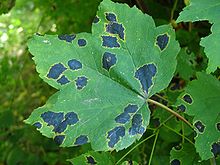Principles of Plant Palatability and Quality Assessment
Principles of Plant Palatability and Quality Assessment
Author : Louise Jakobsen
Plant palatability often comes down to texture, taste, smell and especially the presence of certain plant metabolites and toxins.
Some leaves may have a very sticky or waxy texture. Other leaves may be quite hairy and some wilts really quickly.
Different animals will have different preferences. Some animals will not touch certain plant species regardless of how hungry they are, but other animals would consume the very same plant species quite happily.
Other than the nature of the plant affecting palatability, there are also external factors that may have an impact on not only the palatability, but also the health of the animal consuming the material:
- Plant diseases
- Air pollution
- Weather exposure (sun, wind)
- Contamination
- Soil/dirt
- Chemicals like pesticides and herbicides
- Bio-contamination (urine, faecal matter etc. from other animals/humans)
- Freshness in general
It is important to know where you are sourcing your plant material from to avoid the risk of pollution and contamination and be critical about the condition of the material.

The European tar spot disease in sycamore leaves, caused by fungi in the genus Rhytisma. It has previously been associated with equine atypical myopathy, although this disease has now been linked to a specific toxin present in certain Acer species. It is still worth avoiding feeding affected trees to your animal.
Preserving the freshness is strongly advised if receiving large amounts of browse to use over a few days or longer; both for palatability, but also for nutritional quality. Besides, with some plant species, the otherwise harmless amount of toxins may become more concentrated when leaves are wilting. In terms of preserving freshness, it is of course a much simpler task when talking about actual branches as opposed to other plant material like wildflowers etc.
How browse is managed differs from collection to collection. Some will harvest or collect branches on a daily basis where other collections have invested in containers to store their browse in water and keep fresh for a longer time.
If you are collecting plant material like wildflowers or herbs, they will store well in a fridge for a few days.
Overall, you must treat your plants with respect! It is sadly not an unusual thing to see people happily trotting all over the plant material with dirty boots or dragging branches across grit and sand and puddles prior to feeding it out. We carry all sorts underneath our footwear and that will transmit very easily to the plant material you are stepping on. Grit and sand will also contain all sorts of contaminants as well as pose a risk of compaction of guts if too much sand is consumed or risk of damage to the animal’s teeth when chewing on grit stuck to the leaves.
Remember, the better you look after your animal’s food, the better you look after your animal!



